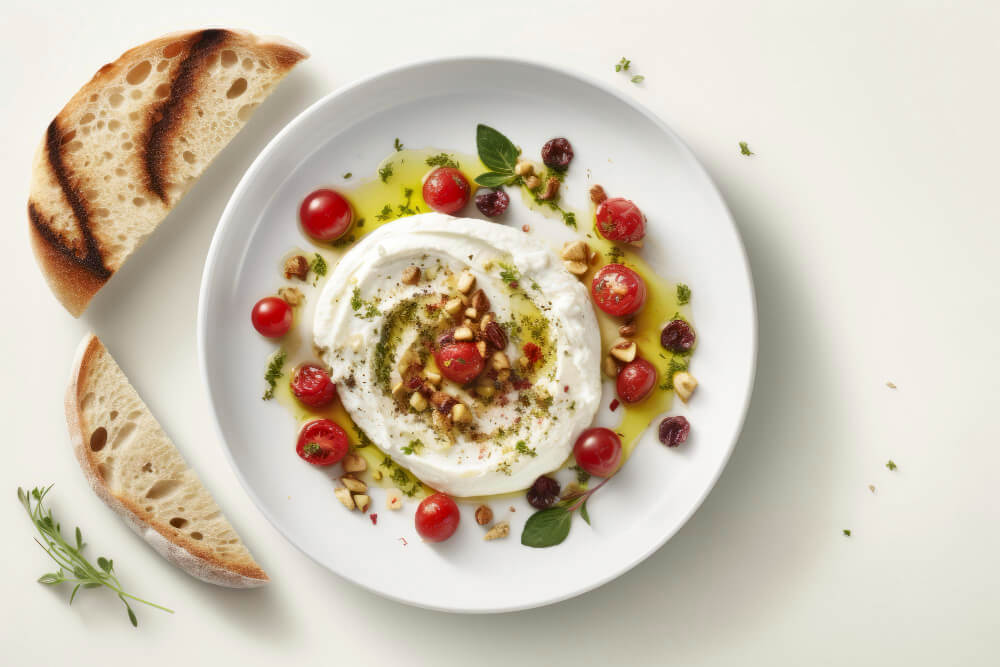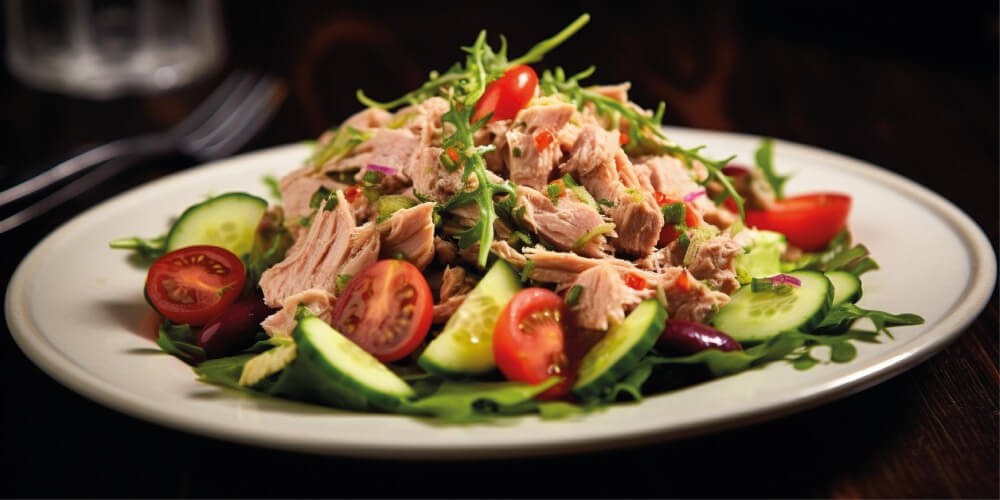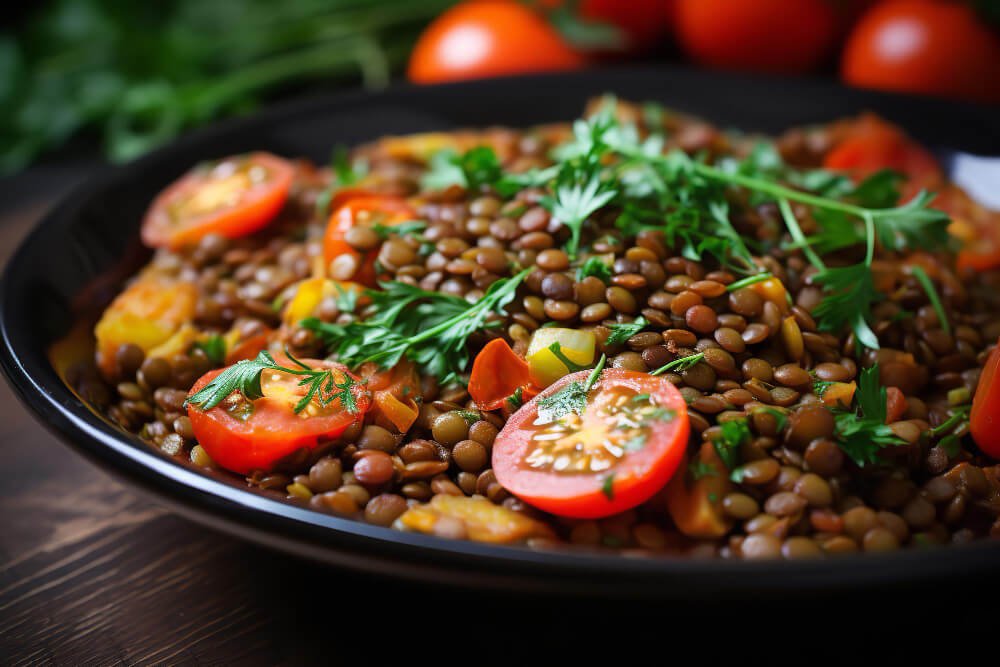Take a break from eggs and try some of these delicious alternatives.
I love eggs and don’t want to steal the thunder away from them!
Eggs are a staple in most people’s meal plans — and with good reason.
They are portable and go well with basically anything you eat. You can always count on eggs to give you 13 essential vitamins and minerals and 6 grams of protein.
Protein is essential for functions throughout the body, including tissue repair, hormone buffers and transporters, and regulators. Plus, it helps you feel satisfied and eliminates unnecessary food consumption and snacking.
We all should be getting around 10–15 grams of protein per snack -that way, we can give our bodies short and sharp influxes of protein (rather than one big sitting).
Try to get about 30 grams per meal, and don’t feel guilty about personalising it to your needs. Make sure you speak to a doctor or dietitian who’s an expert.
A good sign that you are eating enough protein is feeling satisfied after you eat and then in between meals.
For example, if you are run down and finding it hard to recover from exercise and illness, then look at how much protein you consume.
It might be the case of adding a few snacks or something like chicken into your meal.
Change up your protein sources by adding both animal and plant-based varieties. Here are some you may have dismissed that are higher in protein than an egg!

One: The new protein craze
Cottage cheese is barely used nowadays, which is unfortunate since it’s a very nutritious and delicious source of low-calorie protein.
It is packed with casein protein, a slow-digesting protein that sustains amino acid release.
This is crucial for muscle repair and growth, especially when consumed before bed or after a workout. Casein helps in the continuous supply of amino acids to the muscles, aiding muscle recovery and growth over time.
You get about 12 grams of protein in as little as 100g, with the added benefit of calcium.
Despite its high protein content, cottage cheese is relatively low in calories, making it an excellent food choice for those trying to lose weight. High-protein diets have been linked to increased satiety and reduced hunger. Consuming low-calorie, high-protein foods like cottage cheese can help reduce overall calorie intake, an essential factor in weight loss.
Add it to your smoothies or sprinkle a bit of granola and berries on top, with a drizzle of honey and cinnamon for a delicious take-anywhere snack.
How about combining it with avocado, salt and olive oil for a lovely savoury snack during that 3 pm slump?
Simple alterations such as these can help you meet the necessary protein quota and give you an added boost of much-needed energy.

Two: Sea in two different forms
Tuna doesn’t get a lot of mention within the ‘high protein’ list — but it has a lot of healthy fats, like omega-three and can be eaten raw or cooked.
Canned tuna in water is low in calories and fat, making it a great option for weight loss diets. High-protein foods like tuna contribute to satiety, helping you feel full longer, which can lead to a reduction in overall calorie intake – a key factor in weight loss. It also provides a range of essential nutrients, including B vitamins (particularly B12 and niacin), which are important for energy production and overall health. It’s also a good source of minerals like selenium, magnesium, and potassium.
A 3-ounce slice of raw tuna has 20 grams of protein, whereas a can has 33 grams! So, you can take your pick on what’s the most preferred.
Tuna is a great add-on to your salads, or perhaps when making a burger, wrapped, or added to rice. It’s so easy to use because of its convenience and practicality.
So next time you go shopping, stock up on some cans of tuna and indulge in a cook-off with some fresh steaks.

Three: Good old Pulses
I had to add this one — as lentils are my staple high protein & fibre food choice every week.
This high fibre content aids digestion and promotes a feeling of fullness, which is crucial for weight management. Eating fibre-rich foods can help prevent overeating by keeping you satiated for longer periods, reducing overall calorie intake.
Despite being nutrient-dense, lentils are relatively low in calories, making them a great option for those aiming to lose weight. They provide a feeling of fullness without a high-calorie count.
They are also a good source of essential nutrients supporting muscle building and overall health. They contain B vitamins, iron, magnesium, potassium, and zinc. Iron, for example, is crucial for transporting oxygen to muscles, and magnesium plays a role in muscle function and energy production. The complex carbohydrates and high fibre in lentils help stabilize blood sugar levels. This benefits sustained energy levels and avoid spikes and crashes, which is important for weight loss and muscle building.
You get about 9 grams of protein in 1/2 a cooked serving, 8 grams of fibre and 3mg of iron. Lentils also contain potassium and are very low in calories.
I love lentil soup, and you could also add lentil soup mix (minus the water) into your salad for a nice protein, carb and fibre infusion. Hot or cold, you can eat lentils any time of the year.
Blend them to make a lentil-like hummus using garlic, onion and your favourite herbs.

Four: Small crunch, big results
Almonds, cashews, walnuts and pecans are wonderful — but what about those with a nut allergy?
Whether you do or not, pumpkin seeds have become the most forgotten nutrient powerhouse.
Pumpkin seeds can be beneficial in weight loss diets when consumed in moderation.
Their high protein and fiber content can enhance feelings of fullness and reduce overall calorie intake. High-protein snacks, like pumpkin seeds, have been shown to provide greater satiety and reduced hunger sensations, as indicated by a study published in the “Journal of Nutrition and Metabolism.
These seeds are high in protein and rich in magnesium, a mineral crucial for muscle function and recovery. Magnesium plays a role in muscle relaxation and can help prevent cramps and spasms. The seeds are also a good source of zinc, which is important for immune function and overall muscle growth and repair.
Healthy fats, including omega-3 fatty acids, benefit overall health and are abundant in pumpkin seeds. These fats can also contribute to a feeling of satiety, potentially aiding in weight management.
There is no limit to how many things you can do with pumpkin seeds, like pesto or add it to pasta, baked potatoes or just on their own. I love pumpkin seeds.

Five: Crispy delight
The other night, I enjoyed eating crispy roasted chickpeas -delicious.
They contain almost 15 grams of protein and iron when cooked.
Since they are high in dietary fiber, they can help in weight management. Fiber promotes feelings of fullness, reducing overall calorie intake by decreasing hunger. A study published in the “Journal of Nutrition and Metabolism” found that a diet rich in high-fibre foods like chickpeas can enhance weight loss and improve body composition.
Beyond protein and fibre, chickpeas are packed with essential nutrients that support muscle health, including iron, magnesium, and potassium. These minerals are crucial for muscle function and recovery. Potassium, B vitamins, iron, magnesium, and selenium in chickpeas also contribute to heart health. Maintaining a healthy heart is crucial for overall wellness and physical activity.
You can easily toss chickpeas into a salad and blend them into a dip or a sauce. Using the liquid from chickpeas makes a nice, egg-white fluff consistency.
Try that out next time, and make a plant-based meringue.

Six: Look beyond chicken breast
Turkey and chicken are both excellent sources of lean protein, but there are some aspects where turkey might have a slight edge, especially for specific dietary goals like muscle building and weight loss.
For starters, Turkey is a lean source of protein, especially the white meat (breast), which is lower in fat and calories than some parts of chicken. This makes turkey a great option for those looking to build muscle without adding too much fat. Protein is crucial for muscle repair and growth, and the high-quality protein in turkey provides all the essential amino acids needed for muscle synthesis.
For weight loss, calorie control is key. Turkey, particularly the breast portion, is slightly lower in calories than chicken when comparing equal portions. This can be beneficial for creating a calorie deficit while maintaining a high-protein diet, which is essential for preserving muscle mass during weight loss.
When consumed as part of a balanced diet, lean turkey can contribute to heart health due to its low saturated fat content (especially in white meat). Maintaining a healthy heart is important for overall wellness and physical activity.
Turkey is more dense than chicken and contains 25 grams of protein in a four-ounce serving.
It’s a good idea to alternate between protein sources for variety, and turkey provides a nice point of difference.
I recommend air frying turkey steaks or using turkey mince instead of beef. It has fewer calories and brings a nice flavour to your Bolognese.
Key take away
Sometimes, we can become just a bit caught up with the continual cycle of food preferences for convenience.
Getting a variety of nutrients is very important in anyone’s diet; it makes it a bit more flavoursome — if nothing more.
So, next time you get stuck on what kind of protein to eat, try a few alternatives as meals and snacks and watch how much more committed you will become towards sticking with your dietary plan.

2 Comments